Breast cancer may have just found its greatest adversary: small amounts of cannabis pack some serious anticancer properties.
We shed light on how THC and CBD interact with cancer cells and alleviate chemotherapy side-effects. Research reveals that cannabis “inhibits tumor cell proliferation, induces apoptosis in vitro, and blocks angiogenesis and tumor invasion/metastasis in vivo.”
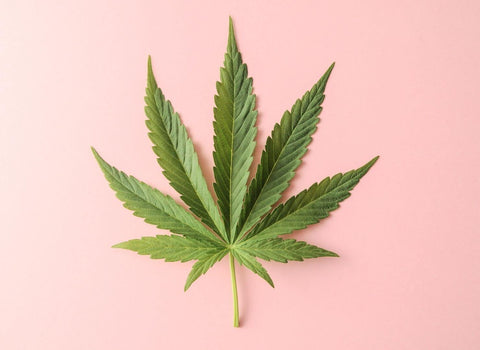
Explore the extraordinary benefits of microdosing cannabis and learn how small doses of CBD and THC may be more beneficial than higher doses. Microdosing can help treat a wide range of medical conditions like neuropathic pain, insomnia, inflammation, and chronic stress.
Try our Bliss Delta 9 gummies, with a balanced ratio of THC and CBD. Every bite is not just a ticket to potential relief, but also a moment of delicious indulgence.
What is Breast Cancer?
Breast cancer is a malignancy that forms in the cells of the breasts, more specifically in mammary gland tissue. The uncontrollable division and mutation of breast cells result in a tumor.
Like other malignancies, breast cancer can invade the surrounding tissues and spread (metastasize) to other parts of the body, leading to the development of additional tumors. The easiest way for cancer cells to do that is through the blood or lymphatic system.
What is the Lymphatic System?
The lymphatic system is an integral part of the immune system. It consists of lymph nodes, ducts, and organs that transport lymph fluid throughout the body. Lymph fluid typically carries waste material, tissue by-products, and immune cells. Once breast cancer cells reach the lymph nodes, they can travel through the entire lymphatic system and spread to other parts or organs.
What are the Types of Breast Cancer?
Breast cancer typically forms in milk ducts or lobules (glands that produce milk). However, cancer can also develop in other parts of the breast, like in the cells of blood or lymph vessels or in the connective tissue (phyllodes), although rarely.
- Invasive ductal carcinoma starts in the milk ducts and spreads by breaking through the duct walls. This is the most common type of breast cancer.
- Ductal carcinoma in situ. Also called Stage 0 breast cancer, this type of breast cancer is considered “precancerous,” as the cancer cells haven’t spread beyond the milk ducts. This makes ductal carcinoma in situ highly treatable, with a high likelihood of successful outcomes if detected early.
- Invasive lobular carcinoma. This type of breast cancer starts in the lobules and spreads to the surrounding breast tissue. It accounts for 10–15% of all breast cancers.
- Lobular carcinoma in situ. Another precancerous condition in which the lobules grow and divide abnormally.
- Triple-negative breast cancer (TNBC) is the most difficult to treat. It’s called triple negative because it doesn’t show the three markers typically associated with other types of breast cancer, which makes diagnosis and treatment more challenging.
- Inflammatory breast cancer (IBC). This rare and aggressive type of cancer is caused by obstructive cancer cells in the skin’s lymph vessels. It resembles an infection, with symptoms like redness and swelling but without presence of a distinct lump or mass. IBC spreads rapidly to nearby lymph nodes and can be more challenging to diagnose and treat.
- Paget’s disease of the breast affects the skin of the nipple and areola. It’s characterized by changes in the appearance of the nipple. Paget's disease of the breast typically indicates an underlying breast cancer, such as ductal carcinoma in situ or invasive breast cancer.
Breast Cancer Symptoms
Breast cancer can present with any or all of the following signs and symptoms.
- Breast lump. A noticeable mass or lump in the breast or armpit area could be a sign of breast cancer.
- Changes in the size or shape of the breast.
- Changes in the size, shape, or color of the nipple.
- Peeling, scaling, crusting, or flaking of the skin around the nipple.
- Changes in the skin over the breast, like dimples, puckers, or pulling in.
- Redness and swelling of the breast.
Breast Cancer Treatments
Breast cancer is typically treated with radiation therapy, chemotherapy, surgery, and hormone therapy. Understanding these risk factors can help individuals make informed decisions about their lifestyle choices, undergo screenings for early detection, and explore the most appropriate approaches to treating breast cancer.
These conventional treatments have been shown to be efficient; however, they often come with side effects that can be hard on breast cancer patients. Cannabis compounds, like THC and CBD, have been investigated for their potential antitumor properties and wide range of therapeutic applications—especially when taken in small amounts.
Are you new to microdosing? Here’s everything you need to know about taking low doses of cannabis to boost your health. There’s no better way to microdose than with our low-dose THC edibles.
Can Cannabis Help Treat Breast Cancer?
According to the British Journal of Cancer, THC and CBD may have the ability to inhibit tumor growth and metastasis and prevent angiogenesis. In fact, researchers have found that:
- Cannabis compounds could be used as an additional therapy in combination with traditional cancer treatment.
- Delta-9-tetrahydrocannabinol (Delta 9 THC) and cannabidiol (CBD) produce synergistic effects: together, they can enhance the effectiveness of currently used chemotherapeutic agents.
- Cannabinoids could also bolster the immune system and support the body's natural cancer-fighting mechanisms.
Find more details about Delta 9 in our in-depth guide. If you want to learn more about cannabidiol and all its therapeutic potential, our comprehensive analysis of CBD is just what you need.
Cannabis Prevents Creation of New Blood Vessels in Tumors
Angiogenesis is an important process by which new blood vessels are created. However, when tumors are present in the body, they latch on to these newly-created blood vessels in order to thrive. A 2015 study looked into the anti-angiogenic properties of cannabis and found that cannabinoids may inhibit the attraction of vessel cells, thereby suppressing angiogenesis in tumors.
Among the diverse mediators of cannabinoids' antitumorigenic action, the tissue inhibitor of matrix metalloproteinases-1, which is released from cancer cells upon cannabinoid treatment, has been implicated as a pivotal factor conferring both anti-invasive properties of cancer cells as well as antiangiogenic capacities of endothelial cells.
The endothelial cells are important because they regulate exchanges between the bloodstream and the surrounding tissues. The study suggests that cannabinoids can directly hinder the angiogenic capacities of endothelial cells by inhibiting their growth, tube formation, and migration.
According to Honarmand, et. al., “in vivo studies demonstrated that treatment with CBD reduced colon cancer cell proliferation, induced apoptosis, and also had anti-metastatic and anti-angiogenesis effects.”
Anti-Proliferative Effects of Cannabis
Cancer cell proliferation is the rapid growth of cancer cells. Unlike normal cells, which have a regulated cell cycle and divide only when they are needed, cancer cells divide uncontrollably. And unlike normal cells, cancer cells grow and spread significantly quicker.
Cannabinoids like THC and CBD have been proven in preclinical research on cell lines and animal models to decrease the development of breast cancer cells and inhibit cancer cell proliferation. According to an article published in the National Library of Medicine, THC “reduces human breast cancer cell proliferation by blocking the progression of the cell cycle and by inducing apoptosis.”
Cannabis Induces Breast Cancer Cell Apoptosis
Other compounds from cannabis plants have also shown anticancer potential. Linalool is a naturally occurring terpene, an aromatic chemical responsible for the flavor and smell of cannabis. A 2014 study showed that linalool may help prevent the growth and proliferation of breast, colorectal, and liver cancer cells. According to the study, “cell cycle analysis also confirmed that linalool and p-coumaric acid can lead to apoptosis.”
Cannabinoids might be helpful in the treatment of different types of breast cancer, including the very challenging triple-negative breast cancer. By interacting with the body’s endocannabinoid system (ECS), THC and CBD can play a significant role in inducing cancer cell apoptosis.
…cannabinoids also have the potential to inhibit cell growth and avoid metastatic development. These effects are typically associated with cell cycle arrest, apoptosis and autophagy, through the involvement of CB1 and CB2 and the modulation of survival pathways. (Almeida, et. al.)
What is the Role of the Endocannabinoid System?
The endocannabinoid system is a complex network of chemical signals and receptors. According to a research study, the ECS “serves pivotal roles in a diverse range of physiological and pathophysiological states, including behavior, pain, schizophrenia, obesity, Alzheimer disease, multiple sclerosis and cardiovascular disease.”
Our bodies produce natural endocannabinoids. Phytocannabinoids that come from cannabis plants interact with our ECS in the same way. They bind to the endocannabinoid receptors and influence many important biochemical changes in the body. By targeting the ECS, cannabinoids seem to slow tumor growth.
Delta 9 has a similar structure to endocannabinoids, so it binds to the same cannabinoid receptors, mainly CB1 and CB2. This interaction initiates a wide range of cellular responses in our bodies. The iconic "high" associated with THC is produced when sufficient amounts of Delta 9 bind to the CB1 receptors located in the brain.
Low amounts of THC do not have the psychoactive effects that normally occur with some other forms of consumption. That’s why our low-dose gummies are the best way to reap the benefits of cannabis.
Try our low-THC Energy gummies, with only 2.5 mg of Delta 9 THC per gummy. These yummy edibles are paired with a balanced ratio of cannabidiol to promote relaxation and give you that sweet sense of tranquility without overwhelming your senses.
THC and CBD are two major cannabinoids from the cannabis plant. To gain a deeper understanding of these intriguing compounds, check out our thorough examination comparing THC and CBD.
Product QUIZ
Need help deciding what product is best for you? Take our quiz, just three questions until your perfect match!
Cannabis and Chemotherapy-Induced Side Effects
Cannabis is most commonly used to treat chemotherapy-associated side effects. THC and CBD have similar medicinal effects when it comes to alleviating the nasty side effects of cancer treatment.
Let’s see why the combination of THC and CBD brings greater relief from chemotherapy-induced side effects:
- Chemotherapy-induced nausea and vomiting are some of the most distressing side effects for cancer patients. Low doses of cannabis can significantly reduce these symptoms. THC interacts with the endocannabinoid system's CB1 receptors to induce antiemetic effects, alleviating feelings of nausea and vomiting.
- Mental health is often compromised in cancer patients due to the stress of their diagnosis and treatment. Cannabis can help manage anxiety and depression symptoms. CBD is believed to interact with serotonin receptors in the brain to regulate mood. Small doses of cannabis can promote relaxation, improve mood, and reduce anxiety, thus improving the overall mental well-being of patients.
- THC and CBD have analgesic properties that can help alleviate cancer pain. THC interacts with CB1 receptors to alter pain perception, while CBD may reduce inflammation, a significant contributor to chronic pain. Tomko, et. al. suggested that “the therapeutic use of cannabinoids is currently limited to the treatment of symptoms and pain associated with chemotherapy, while their potential use as cytotoxic drugs in chemotherapy still requires validation in patients.”
- Many cancer patients struggle with insomnia and poor sleep quality. Low doses of cannabis can help by promoting relaxation and reducing anxiety, two key components of healthy sleep.
- Chemotherapy often leads to a reduced appetite, causing weight loss and weakening the patient’s immune system. THC is a well-known appetite stimulant. By interacting with the CB1 receptors in the brain's hypothalamus, it stimulates the release of the hormone ghrelin, which triggers hunger. Regular, low-dose consumption of cannabis can help increase appetite and promote healthy weight management in cancer patients.
Order our Relax Plus gummies to experience a new dimension of tranquility in your life. These easy-to-dose edibles provide the perfect balance of Delta 9 and CBD, which work together to induce the munchies and promote restful sleep.
The best way to get the most from THC and CBD is to take both compounds together. Let’s talk about the entourage effect.
THC and CBD in the Entourage Effect
In the entourage effect, cannabis compounds work together to produce increased therapeutic effects. This means that if you take THC and CBD together, CBD improves the effects of THC, and vice versa.
The effects of both cannabis compounds might seem to be more beneficial in combination than in isolation.
…CBD displays an entourage effect (the mechanism by which non-psychoactive compounds present in cannabis modulate the overall effects of the plant), and is capable of improving tolerability and perhaps also the safety of THC by reducing the likelihood of psychoactive effects and antagonizing several other adverse effects of THC (sedation, tachycardia, and anxiety). (Vučković, et. al.)
Some people don’t believe that the entourage effect is a real thing, but evidence in its favor is piling up. The best way to experience the synergistic effects of cannabis is with our full spectrum CBD products. They contain all the major and minor cannabinoids that propel each other to greater therapeutic effects.
Most of our Delta 9 gummies produce the entourage effect. We love pairing THC and CBD together and adding a delectable range of flavors. Order our full spectrum edibles and discover the full potential of cannabis packed into low-THC treats.
Many cancer patients struggle with sleep. Taking low doses of THC and CBD is a great way to improve sleep quality and manage the discomfort that often accompanies a cancer diagnosis. That’s a heck of a good reason to try our Sleep Plus gummies, with 2 mg of THC, 25 mg of CBD, and an extra helping hand of melatonin.
The combination of melatonin and cannabis in lower concentrations can help reduce the time it takes to fall asleep and improve sleep quality. Read more about the effects and benefits of adding melatonin to your everyday routine.
Is Cannabis Legal?
Microdosing Delta 9 THC is federally legal in the US under specific 2018 Farm Bill stipulations that say that Delta 9 THC edibles are legal if:
- The THC is derived from hemp, not marijuana
- The THC content does not exceed 0.3% by dry weight.
The Farm Bill removed hemp from the list of controlled substances, legally separating hemp from marijuana. This means that all of our THC edibles and CBD gummies are 100% legal at the federal level because they’re made from organic hemp.
However, each state chooses independently whether cannabis products containing Delta 9 THC will be legal in that state. For example, you can’t buy our Delta 9 edibles in Idaho and Kansas. Check out our detailed guide to state-by-state THC legality for additional information.
If you’re looking to buy the best THC edibles in the country, nama CBD is the obvious choice. We care about what goes into our gummies, so we make sure we use only the highest quality ingredients and natural flavors. See where you can buy our amazing gummies.
Cannabis for Breast Cancer FAQ
CBD may have potential therapeutic effects on breast cancer by interacting with the endocannabinoid system to influence important physiological processes. It may help manage symptoms associated with breast cancer treatment, such as chronic pain, inflammation, nausea, and anxiety. Did you know that CBD is a potent anti-inflammatory agent?
We believe that the best cannabis products for cancer pain are our Delta 9 edibles, which contain low doses of THC, CBD, and other beneficial cannabis compounds. Other cannabis products like cannabis extracts, oils, and tinctures, may be helpful in relieving pain.
Another great way to microdose Delta 9 is with our delectable THC drinks. They offer ultra-low THC amounts, ensuring a gentle and controlled experience. Try our Buzz Drops and bring fun and sweet relief to every Friday night.
The choice of product depends on individual preferences and needs. Some patients prefer CBD-dominant products with minimal THC content to avoid psychoactive effects, while others find a balanced THC to CBD ratio more effective for pain relief.
In order to determine the most suitable product, dosage, and administration method for managing cancer-related pain, consult with a healthcare professional experienced in cannabis medicine.
Cancer patients may consider taking cannabidiol (CBD) to help manage various symptoms associated with the disease and its treatment. CBD has shown potential for:
- Alleviating pain
- Reducing inflammation
- Alleviating chemotherapy-induced nausea and vomiting
- Improving sleep quality
- Reducing anxiety and depression
If you’re interested in trying CBD for cancer, consult with your healthcare provider to discuss appropriate dosages and any potential interactions with other medications.
Cannabis has the potential to interact with certain medications, including immunotherapy drugs, due to its influence on drug metabolism in the liver. That’s why the use of cannabis oil combined with immunotherapy requires careful consideration and consultation with healthcare professionals. Discuss the use of cannabis oil with your oncologist or healthcare provider to ensure that it does not interfere with the effectiveness or safety of immunotherapy treatment.
CBD may have anti-inflammatory and anti-proliferative properties that could potentially inhibit tumor growth and promote apoptosis in lung cancer cells. CBD may also help alleviate chemotherapy-induced side effects and improve the quality of life for lung cancer patients.
While preclinical studies have shown potential anti-tumor effects of CBD in lung cancer, more research is needed to determine its efficacy and safety in human subjects. If you’re interested in taking CBD for cancer, consult with a healthcare provider to establish an appropriate dose of CBD that aligns with your specific needs and medical conditions.
While CBD is generally considered safe, there are some situations where caution should be exercised or CBD should be avoided. It is recommended to avoid CBD if:
- You’re pregnant or breastfeeding.
- You have underlying medical conditions or are taking other medications.
- You’re taking certain medications metabolized by the liver’s cytochrome P450 enzyme system. CBD may interact with these medications and potentially lower their efficacy.
- You have liver disease or impairment.
THC and CBD have shown anti-tumor effects in prostate cancer cell lines, inhibiting cell growth and inducing cancer cell death. A systematic review published in the National Library of Medicine found that “the treatment of prostate cancers in in vivo/xenograft models with various cannabinoids decreased the size of the tumor.”
Cannabis can also help alleviate symptoms associated with prostate cancer and its treatments, such as pain, inflammation, and nausea.
Both CBD and THC have shown potential for managing symptoms of dementia and Alzheimer's disease. CBD may have neuroprotective and anti-inflammatory properties that could help reduce the progression of neurodegeneration associated with Alzheimer's. THC, on the other hand, may assist in reducing amyloid plaque buildup, a hallmark of Alzheimer's pathology. These effects could potentially improve cognitive function and quality of life for individuals with Alzheimer's.
Microdosing cannabis can be beneficial for the brain. A research study on the effects of cannabis on the brain suggests that cannabis could have a positive impact on diseases that affect memory, like Alzheimer’s and Huntington’s. Low doses of THC slow or even prevent the progression of these neurodegenerative diseases, mainly by promoting the creation of neurons.
Research indicates that THC can help protect nerve cells from damage and reduce pain and inflammation in people diagnosed with multiple sclerosis (MS). This is important in treating MS, as the inflammatory disease progressively destroys neurons.
A systematic review of medical cannabis found that people with multiple sclerosis experience relief of muscle stiffness (spasticity) and pain after consuming cannabis-based products. German researchers claim that the health effects of cannabis are significant in improving the overall quality of life in patients with multiple sclerosis.
Cannabis has been explored for its potential therapeutic benefits for various types of cancer. Here are some areas where cannabis has shown promise:
- Skin cancer. Cannabinoids from the cannabis sativa plant may exhibit antitumor effects in skin cancer cell lines. They have shown potential for reducing cell viability, inducing cancer cell death, and inhibiting tumor growth.
- Metastatic breast cancer. Medical cannabis has been explored for its potential in alleviating symptoms associated with metastatic breast cancer and improving the quality of life in breast cancer patients. Cannabis may help reduce pain, inflammation, nausea, and weight loss commonly experienced during breast cancer treatment.
- Brain cancer. Cannabis may exhibit antitumor effects on certain types of brain cancer cells. Cannabinoids seem to reduce cancer cell viability by inducing cancer cell death in brain cancer cell lines.
Top Sellers
New? Start with our Ultimate Sampler!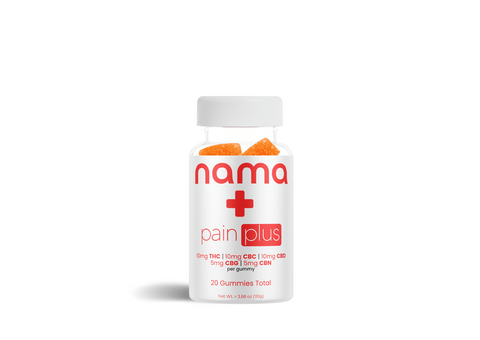
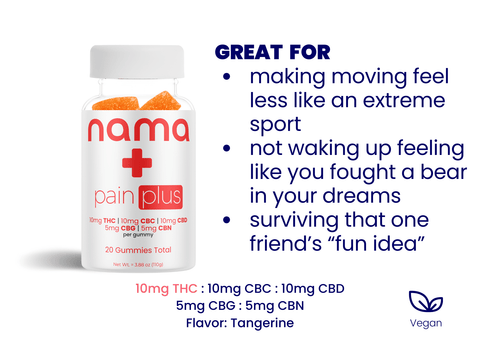
THC: 10 mg | CBC: 10 mg | CBD: 10 mg | CBG: 5 mg | CBN 5mg
Resources
Dariš, B., Verboten, M. T., Knez, E., & Ferk, P. (n.d.). Cannabinoids in cancer treatment: Therapeutic potential and legislation. PubMed Central (PMC). https://doi.org/10.17305/bjbms.2018.3532
Hinz, B., & Ramer, R. (2022, March 11). Cannabinoids as anticancer drugs: current status of preclinical research - British Journal of Cancer. Nature. https://doi.org/10.1038/s41416-022-01727-4
New Insights into Antimetastatic and Antiangiogenic Effects of Cannabinoids. (2014, December 18). ScienceDirect. https://doi.org/10.1016/bs.ircmb.2014.10.005
Honarmand, M., Namazi, F., Mohammadi, A., & Nazifi, S. (2018, August 27). Can cannabidiol inhibit angiogenesis in colon cancer? - Comparative Clinical Pathology. SpringerLink. https://doi.org/10.1007/s00580-018-2810-6
Delta9-tetrahydrocannabinol inhibits cell cycle progression in human breast cancer cells through Cdc2 regulation - PubMed. (2006, July 1). PubMed. https://doi.org/10.1158/0008-5472.CAN-05-4566
Linalool exhibits cytotoxic effects by activating antitumor immunity - PubMed. (2014, May 22). PubMed. https://doi.org/10.3390/molecules19056694
Almeida, C. F., Teixeira, N., Correia-da-Silva, G., & Amaral, C. (2021, December 28). Cannabinoids in Breast Cancer: Differential Susceptibility According to Subtype. PubMed Central (PMC). https://doi.org/10.3390/molecules27010156
Lerner, R., Lutz, B., & Bindila, L. (2013, September 19). Tricks and Tracks in the Identification and Quantification of Endocannabinoids. ELS. https://doi.org/10.1002/9780470015902.a0023407
Tomko, A. M., Whynot, E. G., Ellis, L. D., & Dupré, D. J. (2020, July 21). Anti-Cancer Potential of Cannabinoids, Terpenes, and Flavonoids Present in Cannabis. MDPI. https://doi.org/10.3390/cancers12071985
Vučković, S., Srebro, D., Vujović, K. S., Vučetić, E., & Prostran, M. (2018, October 15). Cannabinoids and Pain: New Insights From Old Molecules. Frontiers. https://doi.org/10.3389/fphar.2018.01259
Singh, K., Jamshidi, N., Zomer, R., Piva, T. J., & Mantri, N. (2020, August 29). Cannabinoids and Prostate Cancer: A Systematic Review of Animal Studies. PubMed Central (PMC). https://doi.org/10.3390/ijms21176265
Silvestro, S., Mammana, S., Cavalli, E., Bramanti, P., & Mazzon, E. (2019, April 12). Use of Cannabidiol in the Treatment of Epilepsy: Efficacy and Security in Clinical Trials. PubMed Central (PMC). https://doi.org/10.3390/molecules24081459
Koppel, B. S., Brust, J. C., Fife, T., Bronstein, J., Youssof, S., Gronseth, G., & Gloss, D. (n.d.). Systematic review: Efficacy and safety of medical marijuana in selected neurologic disorders: Report of the Guideline Development Subcommittee of the American Academy of Neurology. PubMed Central (PMC). https://doi.org/10.1212/WNL.0000000000000363
[Low-dose THC in geriatric and palliative patients] - PubMed. (2022, October 1). PubMed. https://doi.org/10.1007/s15006-022-1856-1
nama CBD FDA & Legal Disclaimer
Our products are not intended to diagnose, treat, cure, or prevent any disease. They are not a replacement for prescription medications and have not been evaluated by the Food and Drug Administration (FDA).
The information provided on this website does not, and is not intended to, constitute legal advice or any statements of the status of any laws. Any information, content, and materials available on this site are for general informational purposes only, and are not intended to be relied upon for any purpose.
Readers of this website should contact their attorney to obtain advice with respect to any particular legal matter including decisions on what products are, or are not, legal to sell, possess, or consume. No reader, user, or browser of this site should act or refrain from acting on the basis of information on this site without first seeking legal advice from their own counsel in the relevant jurisdiction.
Only your individual attorney can provide assurances that the information contained herein – and your interpretation of it – is applicable or accurate for your particular situation. Use of, and access to, this website or any of the links or resources contained within the site do not create an attorney-client relationship between the reader, user, or browser, and website authors, contributors, contributing law firms, or committee members and their respective employers.
About
Learn
Join us on this journey

© Copyright 2025 nama Products LLC. All Rights Reserved.
†These statements have not been evaluated by the Food and Drug Administration. These products are not intended to diagnose, treat, cure or prevent any disease. All information presented here is not meant as a substitute for or alternative to information from health care practitioners. Please consult your health care professional about potential interactions or other possible complications before using any product.
††The information provided on this website does not, and is not intended to, constitute legal advice or any statements of the status of any laws. Any information, content, and materials available on this site are for general entertainment purposes only, and are not intended to be relied upon for any purpose.

By clicking ‘Yes,’ you agree to our
Terms & Conditions and Privacy Policy
123 John Doe Street
Your Town, YT 12345
Store Hours
Sun: Closed
Mon-Fri: 9:00 - 17:00
Sat: 10:00 - 13:00
What to expect at pickup
Closed
Closing at 5pm
Closing at 5pm
Closing at 5pm
Closing at 5pm
Closing at 5pm
Closing at 1pm

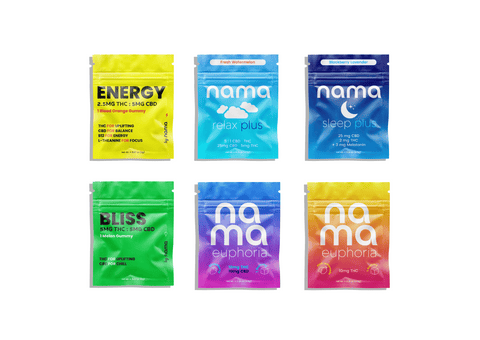
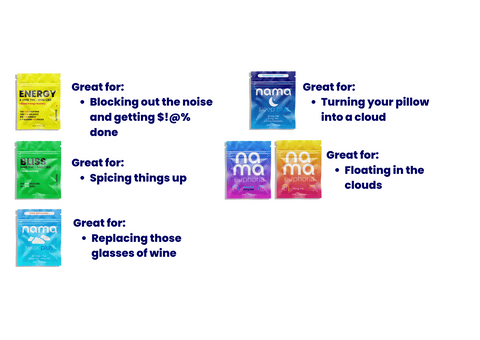
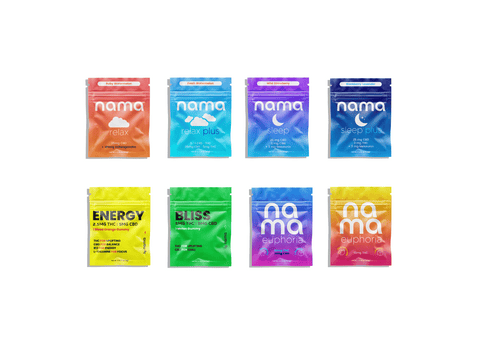
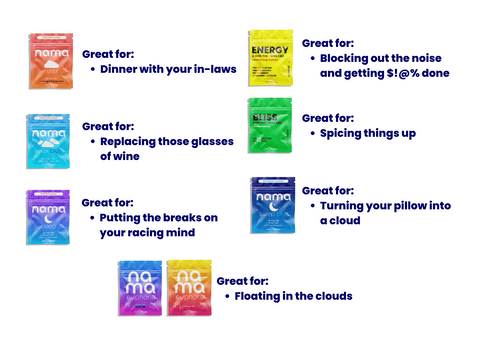
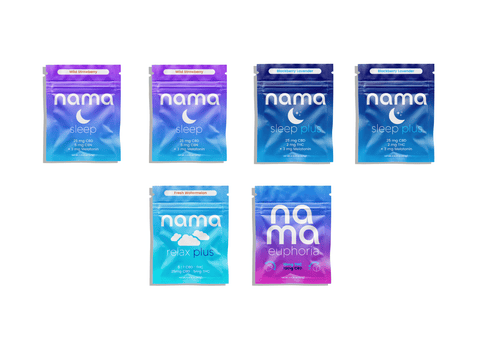
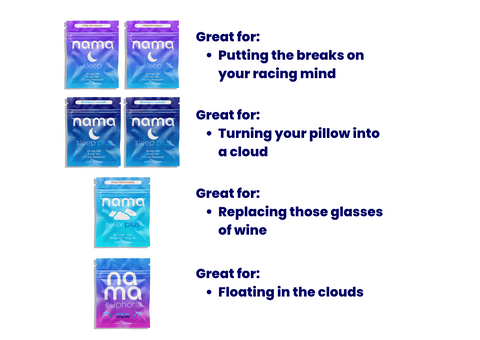
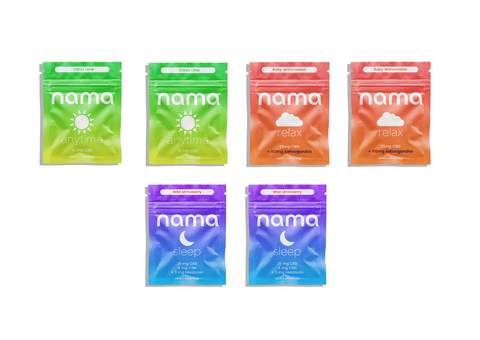
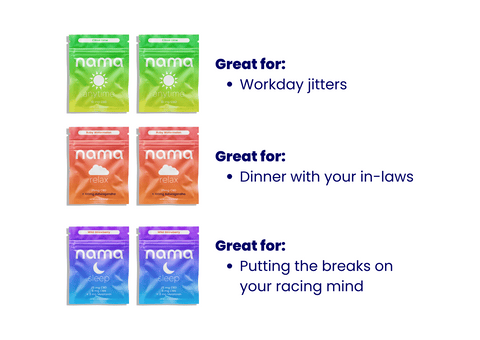
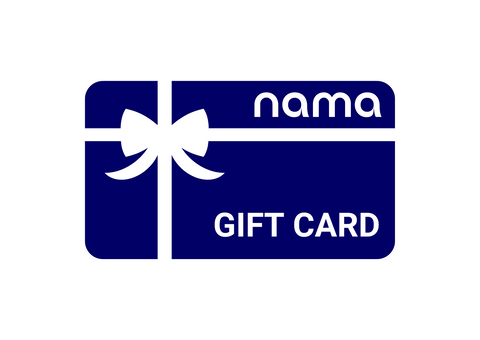
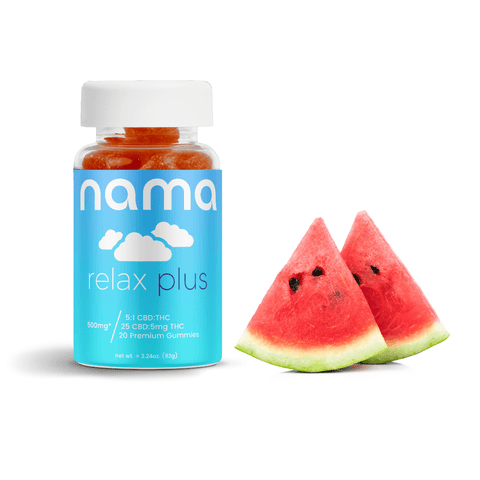
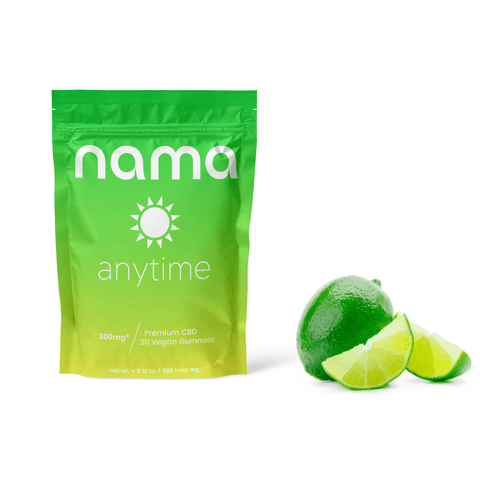
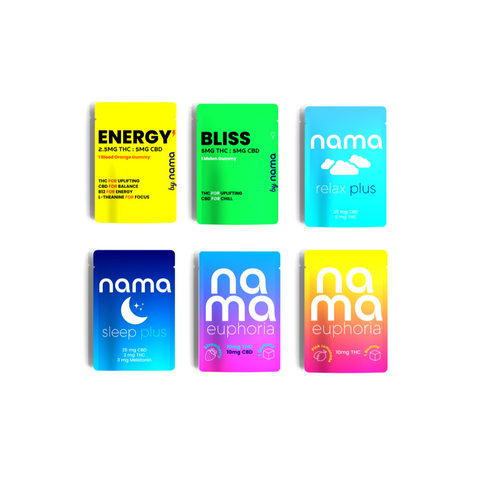
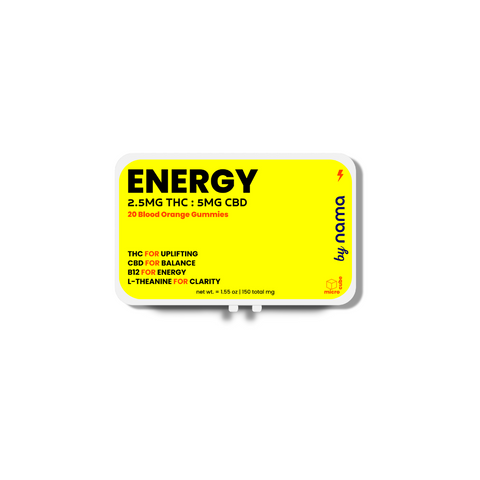
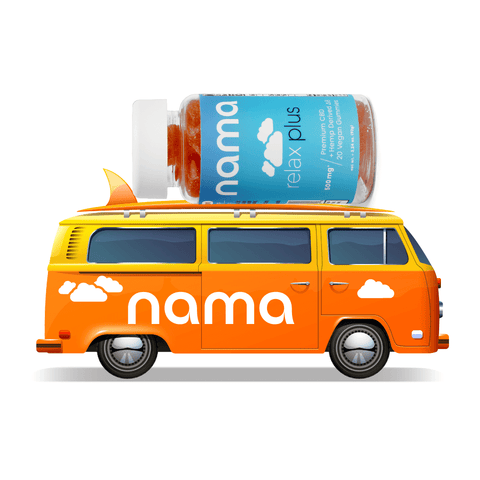
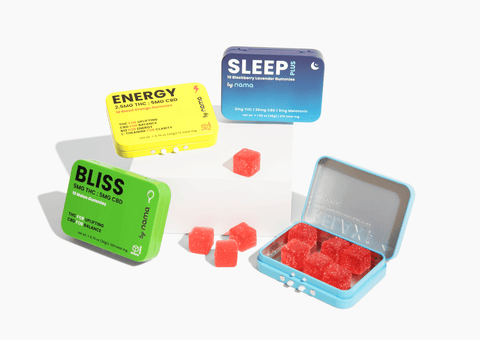
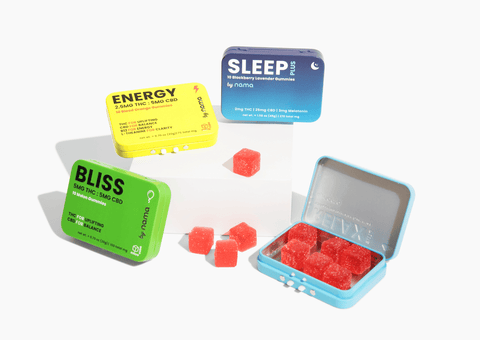
![Buzz Packs™ [THC and CBD Powder Drink Mix]](http://www.namacbd.com/cdn/shop/files/nama_buzz_packs_thc_drink_pack_white_background.png?v=1741884660&width=480)
![Buzz Packs™ [THC and CBD Powder Drink Mix]](http://www.namacbd.com/cdn/shop/files/Buzz_Packs_Label.png?v=1741884660&width=480)
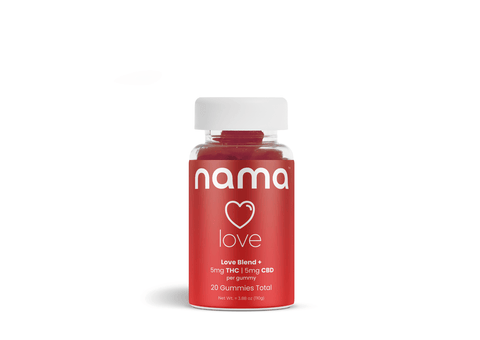
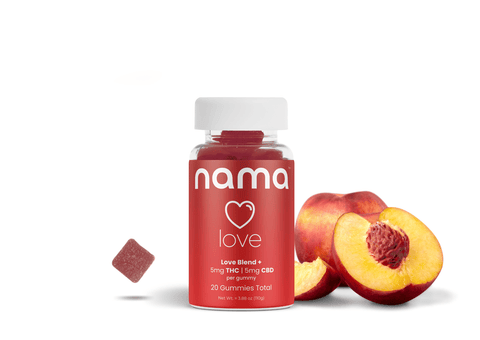
![Buzz Drops™ [THC Drink Drops]](http://www.namacbd.com/cdn/shop/files/nama_thc_buzz_drops.png?v=1711412866&width=480)
![Buzz Drops™ [THC Drink Drops]](http://www.namacbd.com/cdn/shop/files/buzz-drop-wine-comparison.png?v=1736882023&width=480)



Comments (0)
There are no comments for this article. Be the first one to leave a message!